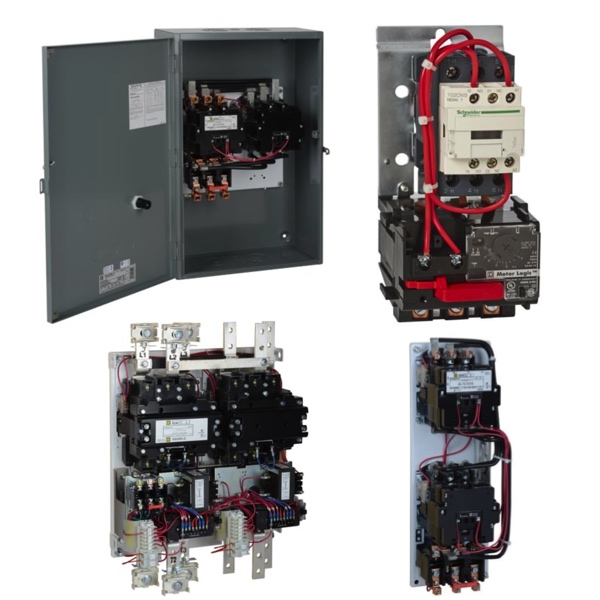NEMA Reversing Starters

Reversing starters, also known as reversing motor starters, are commonly used in industrial applications to control the direction of rotation of electric motors. These starters provide a means to reverse the motor's direction, allowing for bidirectional operation.
They typically consist of components such as motor starters, overload relays, contactors, and voltage protection devices. The motor starter is the main component responsible for controlling the power supply to the motor. It can be manually or automatically operated to start, stop, and reverse the motor. The overload relay is an essential safety feature that protects the motor from excessive current and overheating.
Reversing starters are specifically designed to handle the unique requirements of reversing motors. They ensure that the motor is properly connected and energized in the desired direction. The contactors, which are electromechanical switches, play a crucial role in reversing the motor. By controlling the circuit connections, contactors determine the direction of motor rotation.
NEMA reversing starters are electrical devices used to control the operation of electric motors in both forward and reverse directions. They are designed and manufactured in accordance with the standards set by the National Electrical Manufacturers Association (NEMA) in the United States.
More Information about Reversing Starters
Voltage protection devices, such as voltage monitors or protective relays, are often included in reversing starters to prevent damage to the motor in the event of voltage fluctuations or power supply issues.
These starters are commonly used in a wide range of industrial applications, including conveyor systems, cranes, hoists, winches, and machinery that require bidirectional motor control. They are designed to meet the relevant standards, such as NEMA standards in North America, ensuring compatibility and safety.
Reversing starters are available in various sizes to accommodate motors of different power ratings. The size selection is typically based on the motor's horsepower (HP) or kilowatt (kW) rating. They can be purchased from suppliers who stock a wide range of reversing starters suitable for different motor types and industrial applications.
FAQs
What kind of overload protection is wired to a reversing starter?
The type of overload protection wired to a reversing starter can vary depending on the specific application and requirements. However, one commonly used type of overload protection is the thermal overload relay.
Motor Control Basics
Motor control allows operational control of electrical motors in various environments.
Motor control circuits provide a safe way to operate electrical motors. Back when motor control circuits were in their infancy, it would have been common to see a simple disconnect switch that would be used to turn on and off a motor. Depending on the size of the motor and how much voltage was required, operating this disconnect would have been dangerous, with a very high possibility of arcing or electrocution. Not to mention that when the disconnect was actuated, the large amount of inrush current would have damaged the motor over time.
In today's motor control circuits, there are a few common pieces of hardware.
A circuit breaker is used to protect the motor and any hardware downstream. A contactor and an overload relay are connected together and function in tandem to allow for remote and safe operation of the motor. The contactor functions much like a relay, allowing for a smaller electrical circuit to remotely close the motor contacts, starting the motor. The overload relay is designed to protect the motor in the case of a prolonged overcurrent event. These two devices are wired in series, so that if the overload relay detects an overcurrent event, the contactor will open the motor contacts, shutting off power to the motor.
The other two most common types of motor control hardware are a soft starter and a Variable Frequency Drive (VFD).
Both of these devices function in a similar way to the motor circuit with some added functions. The soft starter is designed to reduce large inrush current to the motor upon startup. This “soft starting” of the motor will prolong its life and allow for safer operation. The VFD performs the soft start functions, but also allows for speed control of the motor. This speed control is critical in many different environments and has made VFDs one of the most common and safe to use motor control circuits today.

